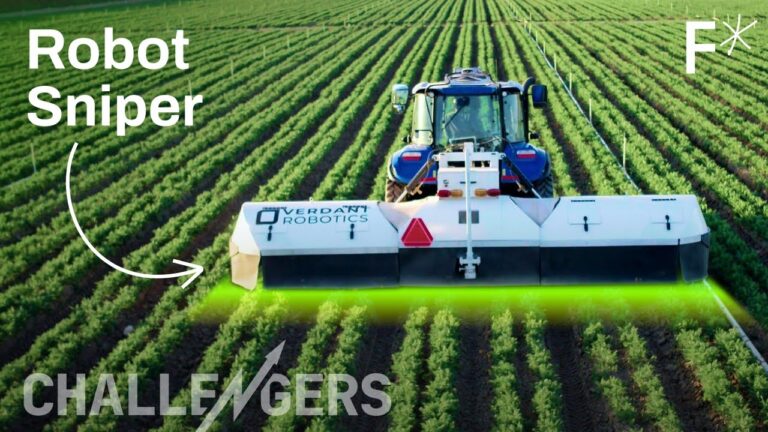Introduction
In the ever-evolving world of agriculture, the integration of technology has been a game-changer. Robotics, in particular, has shown immense promise in optimizing farming practices and increasing yields. One of the key challenges in agriculture is distinguishing crops from weeds, as it directly impacts the efficiency of crop management and resource allocation. Thanks to advancements in artificial intelligence and robotics, we now have sophisticated tools that can autonomously identify and remove weeds, ultimately leading to more sustainable and productive farming. In this article, we will explore how robots are being used to distinguish crops from weeds in precision agriculture.
The Challenge of Weed Management
Weeds pose a significant threat to crop health and productivity. They compete for essential resources such as water, sunlight, and nutrients, making it vital for farmers to implement effective weed management strategies. Traditional methods of weed control often involve chemical herbicides or manual labor, both of which have their drawbacks. Chemical herbicides can harm the environment and have led to the development of herbicide-resistant weeds, while manual labor is labor-intensive and costly. The use of robots in weed management offers a more sustainable and efficient solution.
This “intelligent sharpshooter” farming robot distinguishes crops from weeds — and it could help feed 10 billion people. The world population will hit 10 billion around the year 2050. We must use our farmland efficiently in order to feed everyone, and one solution is to employ autonomous robots. One of these robots is an “intelligent sharpshooter” that can distinguish crops from weeds and then it shoots them with the appropriate treatment. Because of such high precision, the robot uses 95% less chemicals than traditional sprayers. The robot also scans the entire farm and is able to geolocate each plant accurately within centimetres.
Freethink
Robotic Technology in Agriculture
Robots have come a long way in agriculture, from the simple autonomous tractors to more sophisticated systems capable of performing specific tasks, such as weeding. The integration of robotics in agriculture enables the development of precision farming techniques, where each plant is treated individually, optimizing resource usage and reducing environmental impact. The use of robots for weed management is gaining traction due to the following advantages:
- Precision and Accuracy: Robots equipped with cameras, sensors, and advanced AI algorithms can accurately identify and distinguish between crops and weeds. This precision allows for targeted weed control, reducing the need for excessive herbicide use and minimizing crop damage.
- 24/7 Operation: Robots can work day and night, which is particularly beneficial during critical phases of crop growth and weed competition. This continuous operation ensures that weeds are managed effectively without delay.
- Reduced Labor Costs: Automation in weed management significantly reduces the need for manual labor, which can be both expensive and time-consuming. Robots can perform repetitive tasks without fatigue.
- Data Collection and Analysis: Robots can collect valuable data about crop health, weed density, and soil conditions. This data can be used to make informed decisions and improve overall farm management.
Distinguishing Crops from Weeds with Robots
The key to successful weed management using robots lies in the ability to distinguish between crops and weeds accurately. This is achieved through the following methods:
- Computer Vision: Robots are equipped with cameras and image recognition technology. They capture images of the field and use computer vision algorithms to identify and classify plants. Machine learning models are trained on a vast dataset of plant images to enhance their accuracy over time.
- Spectral Imaging: Some robots use multispectral or hyperspectral sensors to analyze the reflected light from plants. These sensors can detect differences in the spectral signatures of crops and weeds, making it easier to distinguish between them.
- Machine Learning: Artificial intelligence and machine learning play a crucial role in the robot’s ability to differentiate between crops and weeds. The system continuously learns and improves its identification capabilities based on the data it collects.
- Decision-Making Algorithms: Once the robot identifies a weed, it can take appropriate action, such as applying herbicide or using mechanical means to remove the weed. These actions are guided by decision-making algorithms that consider various factors, including weed type, location, and crop sensitivity.
Challenges and Future Prospects
While the use of robots in weed management holds great promise, there are challenges to overcome. One significant challenge is cost. The initial investment in robotic systems can be substantial, and ongoing maintenance is required. Additionally, the need for reliable power sources and the ability to navigate complex terrains are important considerations.
As technology continues to advance, we can expect improvements in the capabilities of agricultural robots, including increased accuracy in distinguishing crops from weeds and reduced operational costs. Integration with other precision agriculture techniques, such as GPS and automated planting, will further enhance the efficiency of these systems.
Conclusion
The integration of robotics in agriculture, specifically in weed management, is a promising step towards more sustainable and efficient farming practices. Robots equipped with advanced AI, computer vision, and decision-making algorithms can accurately distinguish crops from weeds, reducing the need for manual labor and excessive herbicide use. As technology continues to evolve, we can expect even more sophisticated and cost-effective solutions, helping farmers worldwide combat the challenges of weed management and increase their crop yields in a sustainable manner. Robotics is not just a tool but a partner in the quest for a more productive and environmentally friendly agriculture industry.


